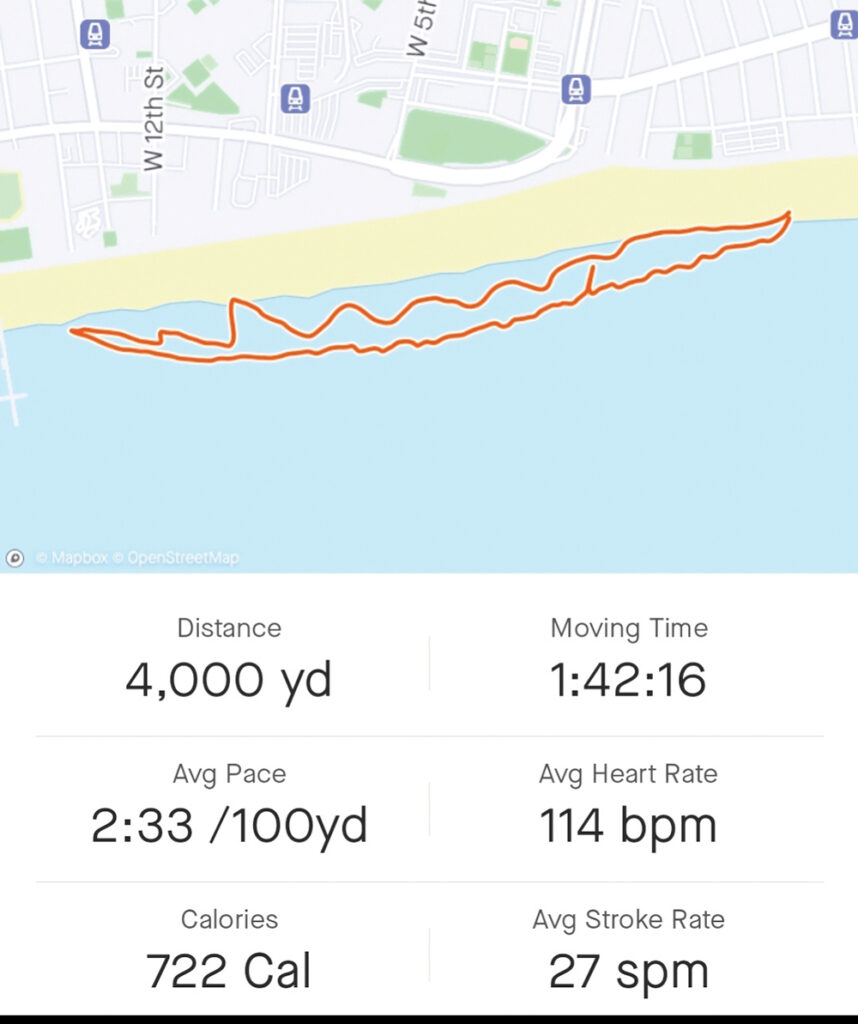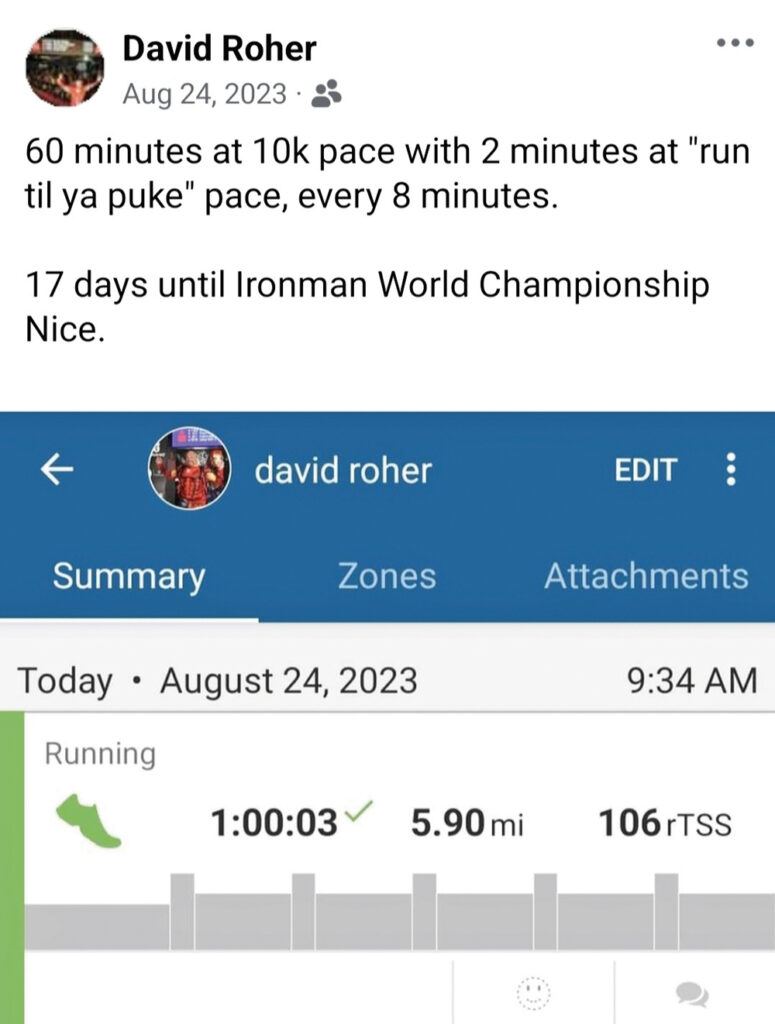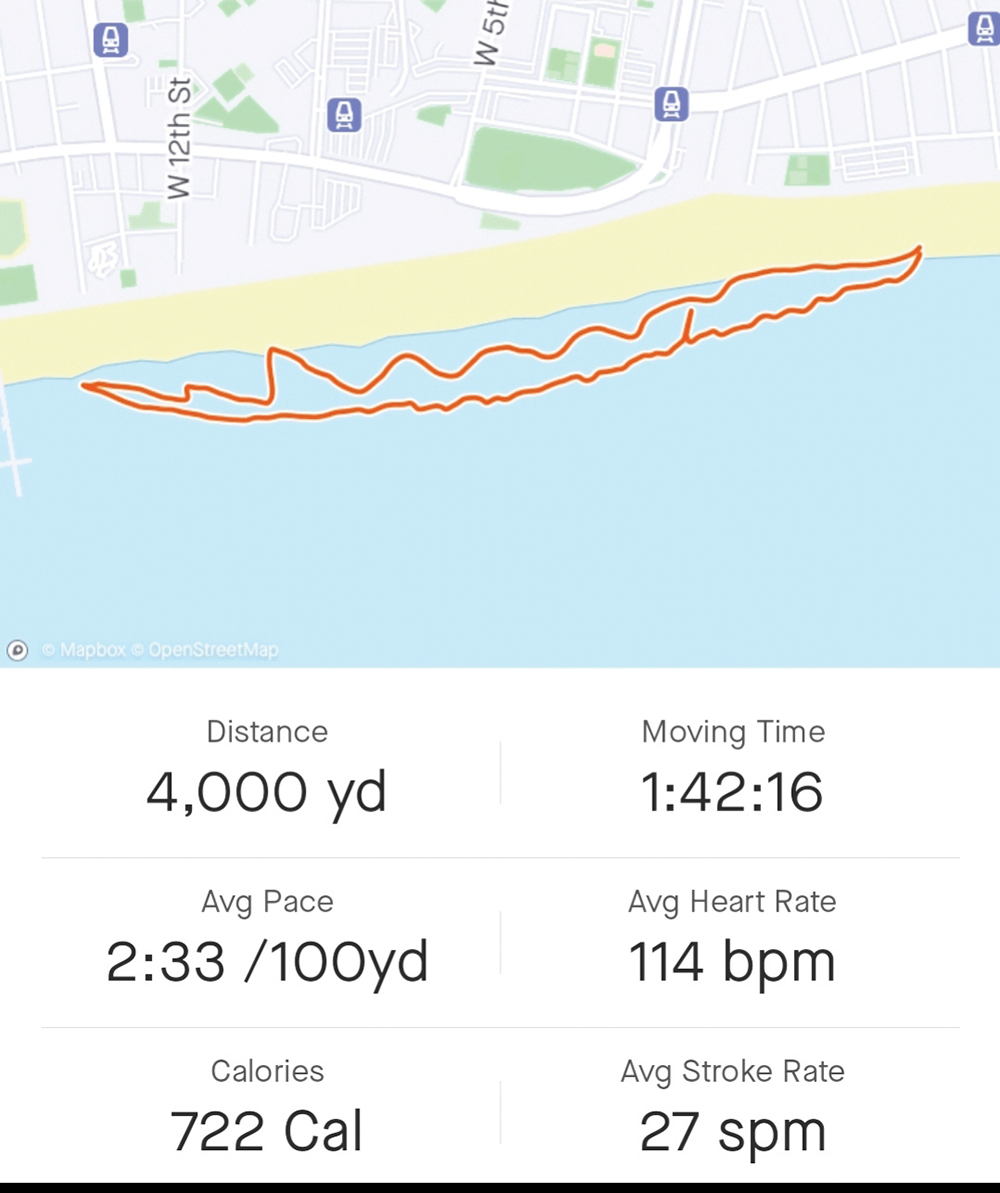
13 Days to Go (August 25)
When I first mapped out the time required to complete Ironman World Championship Nice, I figured that if I exited the swim by 8:30 a.m. I could reach the top of the mountains at mile 40 by noon.
(How?)
I would encounter the first big climb between miles 13-30 of the bike course, but that major climb also had a descent on the other side where I’d be going very fast.
(So you would make up the time you lost in the climb?)
Precisely … Then at mile 30, I had the “13-mile climb” up to mile 43. That would take me 90 minutes.
A total of 3.5 hours to reach the top by noon.
(You are making all this up.)
I am. I originally estimated that it would take me four hours to reach the top with 2.5 hours alone to climb 13 miles. But that math didn’t work, so I just reworked the math.
(What if your math is wrong?)
I didn’t want to think about it. I did that at Ironman UK and I almost psyched myself out.

This was the last week of training.
(Didn’t you still have 13 days left until the race?)
I did, but you don’t train right up until the day of the race.
(That makes sense; you want a good night’s sleep.)
It’s more than a night.
(OK, two nights?)
Try two weeks or in my case, 10 days.
(So you had what, three more workouts left to do?)
Yes, I mean, no, kinda…
(OK, now I’m confused.)
The rest period between the end of training and the race is called the “taper.”
It makes some athletes crazy…
(Because triathletes are a sane bunch?)
Because the closer to the race, the more some athletes feel the need to reassure themselves by doing test runs of long distances.
(And that is bad, why?)
You want to arrive at the event rested.
(So, get a good night’s sleep.)
Mark Zomick once asked me, “How long does it take to recover from an Ironman?”
“Five days.”
“Makes sense,” he replied … except it doesn’t.
It takes me five days to stop feeling sore and fatigued.
It takes my body three weeks to recover its strength.

Bike4Chai is the Chai Lifeline charity I coach for. I have shown up to Bike4Chai practice rides days after doing Ironman Lake Placid for years, and the same thing always happens. I have about an hour of riding strength.
(What do you do while the rest of the riders are cycling through a three- to four-hour ride?)
I sit by the pool and work on my next Jewish Link article.
(What if there’s no pool?)
Bike4Chai training rides have always culminated with a poolside barbecue.
(So, if you need three weeks to recover, do you shut down your training in the last three weeks?)
No, I reduce the volume while increasing the intensity.
(How do you do that?)
Lots of speed work.
The final workouts involved a 4,000-meter open water swim. A three-hour indoor bike ride and a one-hour run.
(Why did the distances recede?)
It correlated to the discipline that required the longest recovery. Swimming takes the least out of me, and running the most.
The last long bike ride was a slog.
(Slog?)
Merriam-Webster defines slog as an intransitive verb that means to “to plod heavily.”
(What does plod mean?)
Merriam-Webster defines “plod” as to tread slowly.
(So you were going slowly?)
I was “grinding it out.”
The workout was meant to simulate climbing the mountains of France.
The goal was to maintain the same cadence of pedaling as I switched from hard gear to harder gear over four climbs. By the end of the first climb, I was breathing heavily and sweat was pouring down my face.
(And you had to repeat that how many times?)
Three more.
(WHY???)
I finished my last three-hour indoor ride and reflected on how far I had come.
“I’m taking an awful risk; it had better work,” from the original “Star Wars” movie came to mind.
(And we all know how that worked out for Darth Vader and the Empire.)
David Roher is a USAT-certified triathlon and marathon coach. He is a multi-Ironman finisher and veteran special education teacher. He is on Instagram @David Roher140.6. He can be reached at TriCoachDavid@gmail.com.










